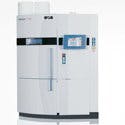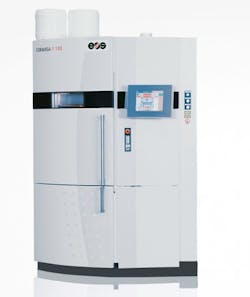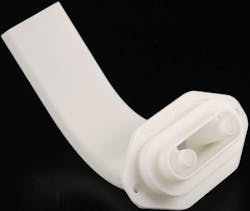Krailling, Germany -Electro Optical Systems (EOS) has unveiled a new system and new polymer materials for additive manufacturing processes.
The Formiga P 110 is suitable for economic production of small series and customized products with complex geometries -- e.g., small sophisticated components used in the medical device industry or for high-value consumer goods. The build envelope is 200 × 250 × 330 mm. The system manufactures products made of polyamide or polystyrene directly from CAD data within only a few hours. Parameters include "Balance 1.0" (120 μm layer thickness) and "Top quality 1.0" (60 μm layer thickness). New features include a 4-channel heating and the use of a single-point pyrometer, plus existing dosing and coating system capabilities. An external nitrogen connection is designed for factories with a central nitrogen supply system. The door-passing laser sintering system can be installed and calibrated in less than two days.
EOS also recently unveiled two new plastic materials for additive manufacturing. PrimePart PLUS (PA 2221) polymer can be refreshed using only a 30% share of new powder, vs. 50% or more for conventional laser sintering materials, resulting in minimum scrap quantities which improves cost efficiency and sustainability, according to the company. Key performance indicators achieved are only slightly lower than those of the company's PA 2200 material. PA 1101 is a natural-colored polyamide 11 characterized by high elongation at break and impact resistance with a balanced performance profile. It is based on renewing resources, and can thus be classified positively in environmental terms. It is particularly suitable for applications with functional elements which require high material ductility (e.g. integral hinges) and ones where high impact resistance is important; another application is for components which do not allow chipping, e.g. passenger cell in vehicles.


